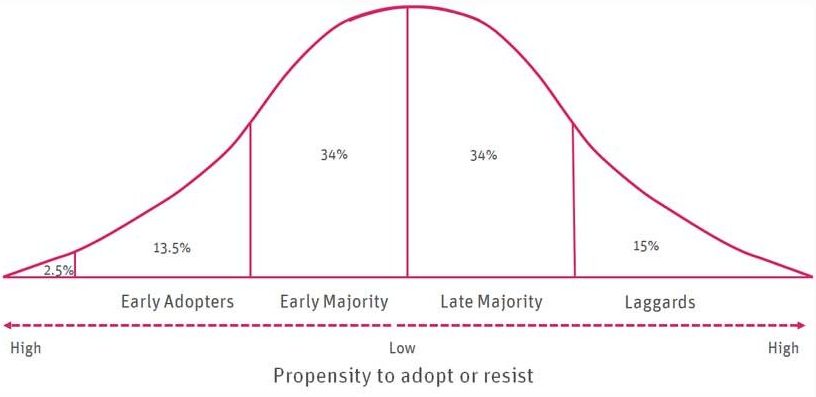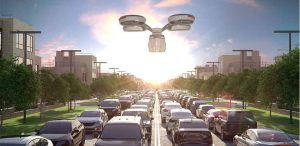eVTOL – Making flying cars a reality?
To anyone that has the slightest interest in the future of air mobility, even a basic google search will illustrate current excitement of 2020 being the pivotal year for eVTOLs (electric Vertical Take-off and Landing) and UAM (Urban Air Mobility). The underlying concept of enabling enhanced mobility using small aircraft have been around for quite some time now, originating with the idea of “flying cars” initially outlined in the 1930s.
Most previous “flying car” designs has removable or retractable fixed wings that required a runway for take-off and landing. These initial concepts had little to no success in being turned into reality. However, the “flying cars” story is now rapidly changing with the proposed use of eVTOLs (combining the benefits of helicopters and fixed wing aircraft) for new forms of mobility whilst solving the 21st century major environmental problems: CO2 emissions. In recent years, ground infrastructure of urban areas has been pushed to cope with unprecedented high volumes of traffic leading to daily congestions spread globally. UAM utilisting eVTOL could be the low-carbon solution for passenger and cargo mobility in these dense metropolis.
After many years of concept refinement and market positioning, 2020 has been known as a decisive milestone towards taking the next step and moving from concept to reality. There is still a lot to do before we see the ubiquitous use of flying cars as envisaeged in Blade Runner. Alongside the necessary evolution of the regulatory frameworks covering vehicles, airspace and ATM, it is also necessary to consider social acceptance of UAM.
In this blog, Diana Toma takes a look at the social acceptability of UAM and how these issues might evolve with UAM – and how we can use Virtual Reality to build awareness of UAM and validate solutions designed to increase social acceptability.
Social acceptability of UAM evolution
An overnight development of autonomous air taxis is not to be expected. Instead, UAM will undergo a series of evolving stages which will build public trust in the attempt of gaining full social acceptance.
To further emphasise the transition and paradigm shift towards public acceptance of highly automated transport and passenger mobility solutions, we can glance at the automotive industry. All major car manufacturers racing to achieve commercialisation of higher autonomy levels including eventually driverless cars (i.e. Waymo). Furthermore, as urban mobility solutions, car manufacturers are proposing autonomous PODs that have already been trialled in London. However, none of these solutions are yet resolving the main issues of congestion and lengthy daily commuting time. Moreover, looking at rail, driverless trains have been in service for over 30 years and they are have already gained public trust which was mainly driven by their needs and efficient and safe transport solutions. But, building new trainlines is a very expensive and time consuming endeavour.
As humans we now seem constantly connected through our phones, health-trackers, cloud storage, wireless and Bluetooth connection to all sorts of devices and services. We accept automation as part of our daily lives not only at home but also whilst travelling. Naturally, as innovative mobility solutions are commercialised, people will start to build trust and embrace autonomy through provision of safe operations across all transport mode (eVTOLs, cars, PODs, Trains). So UAM is not a single-path to change public perception and acceptance, but part of a wider collective effort to normalise driverless transport.
Similar to the diffusion of innovation model or innovation adoption curve (Figure 1 below), social acceptance is time dependent and it not solely reliant on the quality of the UAM services or technologies. Social acceptance is a complex behavioural construct based on a collective set of individual ethics, morals, and values that needs to be addressed and understood for a better chance at a timely industry development.
Looking closely at the innovation adoption curve and definitions of personas that fall under the 5 categories, one can argue that the shape of the curve might change when solely considering an urban environment. Majority of people living in big cities fall under the left-hand side of the curve, meaning there is an opportunity to obtain social acceptance in such places much quicker due to the target population of UAM Operations.

Figure 1 – Diffusion of Innovation model by Everett Rogers
But to be more specific, let’s look at a progressive set of use cases for the evolution of UAM.
Manned flight on specific point to point routes
Flying taxies operating on defined routes from an airport to a big event is only one of the initial potential use cases. For example, Paris aims to reduce traffic jams during the 2024 Olympics by using such UAM services.
For this type of operation, peoples perception is not expected to change drastically as there will still be a pilot on board. Instead, this will be seen as a premium experience that will not only provide a solution to traffic jams during a big global event, but it will prove the utility and convenience of UAM to the wider public, building a trust baseline.
Nonetheless, as there will be well defined routes with limited traffic, this use case provides a good public exposure with limited risk. These eVTOLs will not massively affect the citizens but will be visible enough to raise awareness of the type of new service and capability of UAM.
In addition, people will link these operations with an event which is a positive association and a one-off experience. Thus, this is a great starting point for UAM as the public will probably find such it not only acceptable, but appealing and exciting.
Remotely piloted flights in an air metro context (limited flights)
Although just a step further from the previous use case – still fundamentally a point to point operation providing connectivity with the city centre but on limited well defined routes to specific out of town locations. Think ‘park and ride’ by air! So the ground risk is still limited. It is the introduction of remote pilots that will have a significant social impact. A good example of the challenge in building passenger trust in air travel is the time aviation has been looking at single-pilot operations without yet obtaining social acceptance. Taking the pilot out of the air vehicle is a massive step, so target users will be sceptical.
But social acceptance of remotely piloted flights doesn’t just refer to end users, but it sits mostly with urban area citizens. To access the city centre, heavy noisy eVTOLs will need to fly above highly populated areas. The actual and perceived risk will be much higher. This use case therefore starts to introduce a drastic and potentially permanent change in people’s daily life. However, the limited operating flights and the pre-set route will positively contribute to overall public behaviour towards air metros.
The noise level (one big unknown – how noisy will eVTOL appear over traffic noise?) can be a major contributing factor that will affect social acceptance, The ratio of users vs. passive actors (ground population) will be significant as there will probably be more people that will have to deal with the “noise” than people that will enjoy the benefits of such UAM operations.
To resolve some of the issues and obtain public acceptance of remotely piloted air metros, a set of factors need to be closely monitored and promoted: proof of lifestyle benefits, prolonged safety operations and risk mitigations, strong regulatory framework and positive environmental impact. However, such demonstration will take time. How much? That is still to be determined…
Ubiquitous autonomous air taxi (albeit with limited vertiports)
 This use case is for some, the real end goal – mobility for passenger and cargo within a city – air taxis hopping between a network of vertiports providing a fast and environmentally friendly alternative of mass transit systems. The current rules, regulations and operating concepts for manned aviation are not scaleable to this type of concept. Automation is a key enabler if multiple air vehicles are to operate in the same vicinity. Acceptability of end users becomes secondary as the wider city population will have to adapt and accept a novel urban lifestyle.
This use case is for some, the real end goal – mobility for passenger and cargo within a city – air taxis hopping between a network of vertiports providing a fast and environmentally friendly alternative of mass transit systems. The current rules, regulations and operating concepts for manned aviation are not scaleable to this type of concept. Automation is a key enabler if multiple air vehicles are to operate in the same vicinity. Acceptability of end users becomes secondary as the wider city population will have to adapt and accept a novel urban lifestyle.
Noise produced by not one but multiple eVTOLs flying at the same time becomes one of the unknowns, but assuming that by this time a reduction in noise will be possible, people would therefore associate air taxis with a positive change.
However, this is where the visual pollution becomes most pressing. People normally associate looking up to see the sky with hope, relief, and freedom, in contrast with the chaos of their lives on the ground. Therefore, they will naturally resist the idea of chaos in the sky. Furthermore, many people might still struggle with trusting autonomy and they could perceive the of risk associated with these operations as life-threatening. Hence, extensive efforts and robust mitigations are critical to supporting public validation of autonomous air taxis.
But at this point (not expected to happen in the near future), people might’ve gotten used to some other UAM operations self-driving cars or autonomous pods. Although looking at autonomous taxis in isolation seems unacceptable, good timing aligned with overall context and environmental need can massively reduce the grand challenge of social acceptance.
The Unknown is Great!
Innovation is inevitable. Urban Air Mobility will eventually come to fruition. According to the Peter Parker principle, “with great power comes great responsibility”. UAM is a powerful alternative to pressing problems such as suprapopulated cities, ground transportation congestion and CO2 emissions. A tremendous effort still needs to be invested in order to ensure safe and secure solutions.
Overcoming the psychological barriers of the public is one of the greatest challenges. It’s a joint responsibility of the regulators, creators, and operators of this new type of air vehicle. As shaping public attitudes is essential and needs immediate attention,
I believe that Virtual Reality simulations will be key enablers of tackling social acceptance. They will help the industry understand and measure various levels of acceptability, but also explore further influencing factors that can be leveraged to build trust and confidence with intended end-users. Furthermore, using public Virtual Reality simulators could also positively impact the social acceptance curve as people will be able to accommodate and get familiar with UAM operations virtually and reduce scepticism and even replace it with confidence or excitement for the future.

Author: Diana Toma, ATM Consultant


Recent Comments